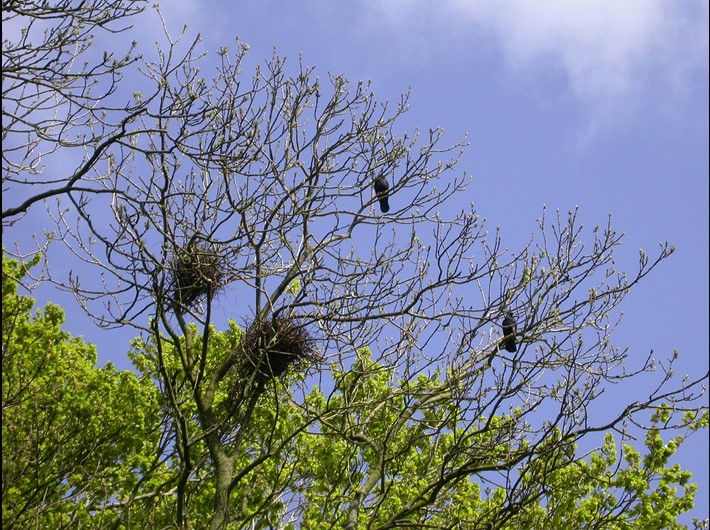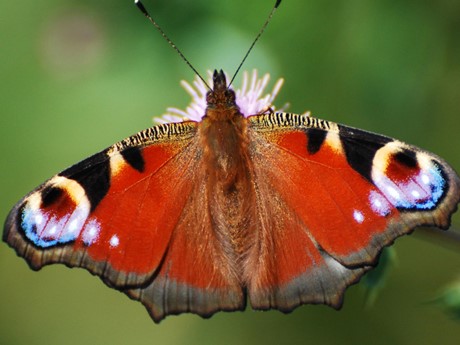Wildlife events to record through April
Lorienne Whittle, 05/04/2022
Beautiful bluebells
In woodlands across the UK spring flowers are taking advantage of a small window of time in which they can bloom. The ground has sufficiently warmed for them to grow, but the canopy of fresh tree leaves is yet to block out the strengthening sun. The rich leaf litter beneath broadleaved trees provides important nutrients and absorbs the sunlight, warming the soil and encouraging growth.
Bluebells are a favourite woodland flower and we’ve had over fifty records of them first flowering so far this spring. If you are lucky enough to have native bluebells near you, please let us know when you spot the first ‘bell’ flowering(when the petals have opened enough for you to see inside the flower).
Learn more about when bluebells flower and where to see them.

The delicate droop of a native bluebell (Photo: Lorienne Whittle)

Bluebells carpet the woodland floor through April (Photo: M Blackburn)
Have you spotted birds nesting near you?
Finding the perfect place to raise your young is a tough decision. To record ‘first nesting’ on Nature’s Calendar, look out for blue tits, great tits and blackbirds actively building their nests. A tell tale sign is when they begin carrying bits of nesting material, such as moss, leaves, twigs, feathers and animal hair, back to the same location. You can also record rooks first nesting with Nature's Calendar. These these gregarious, noisy birds are hard to miss, though you may still spot them refurbishing last year's nest with a few new twigs.

Great tit with nesting material (Photo: Alamany)

Blue tits use a variety of nesting material (Photo: Harry Packwood)

Male blackbirds help gather nesting material (Photo: Fiona Exon)

Rooks build their nests close together high up in tree tops (Photo: Margaret Barton)
Spring events for trees and shrubs
Whether it’s budburst, first leaf or first flowering, trees and shrubs are reacting to the longer, warmer and sunnier days, greening our landscape. There's a wide variety of native trees and shrubs to record for Nature's Calendar. Our phenology calendar is a good place to start, as it highlights key natural events to record throughout the year.
We'd recommend finding a tree or shrub that you see regularly - on the daily dog walk or route to work, for example, so you can watch for those key seasonal changes. We want records from trees in all locations - in gardens, parks, woods and on streets - so find one that's easy for you and help us track it through the year.

Beech leaves usually begin to unfold in April (Photo: Michelle Davies)

Record oak first leaf when the fresh new leaves unfurl (Photo: Kylie Harrison Mellor)

Silver birch trees have catkins - record first flowering when they release their powdery pollen (Photo: Judith Garforth)

Horse chestnuts have flowers on distinctive upright spikes (Photo: Stephen Middleton)
Spring migration: when will birds return from Africa?
Four Nature’s Calendar species (swallows, swifts, house martins and sand martins) migrate from Africa to breed in the UK over our summer. We are able to track this migration through observations submitted to the project and have already had a few sightings this year. Keep your eyes on the sky later in the month and record when you first spot their aerial acrobatics.
Keep a track of all the species migrating from Africa using our live maps.

House martins can be recognised as having a purely white underside (Photo: Alamy)

Sand martins nest together in burrows dug out of sandy cliffs (Photo: North East Wildlife)

Swallow's have a red throat patch (Photo: Amy Lewis)

Swift's spend the vast majoroty of their life on the wing (Photo: Steve Young)

